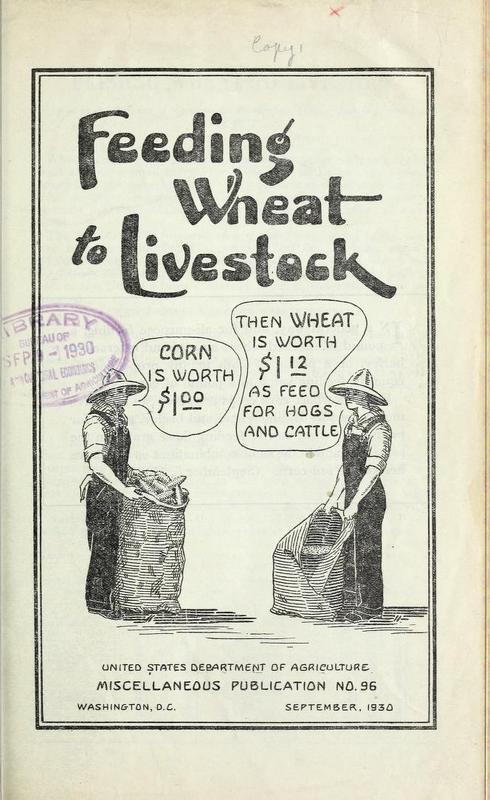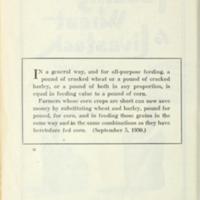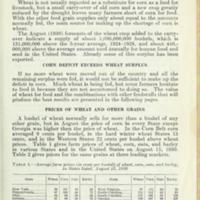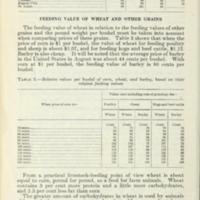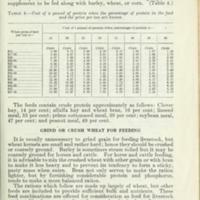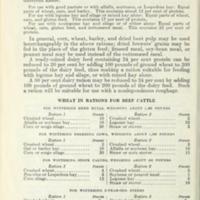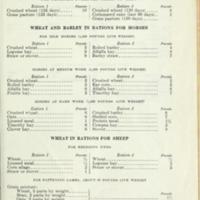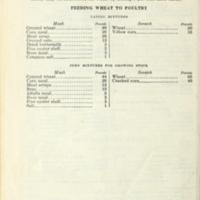Feeding Wheat to Livestock
Date
1930
Subject
Excerpt
IN a general way, and for all-purpose feeding, a pound of cracked wheat or a pound of cracked barley, or a pound of both in any proportion, is equal in feeding value to a pound of corn.
Farmers whose corn crops are short can now save money by substituting wheat and barley, pound for pound, for corn, and in feeding those grains in the same way and in the same combinations as they have heretofore fed corn. (September 5, 1930.)
Wheat is not usually regarded as a substitute for corn as a feed for livestock, but a small carry-over of old corn and a new crop greatly reduced by the drought leaves many farmers short of corn for feed. With the other feed grain supplies only about equal to the amounts normally fed, the main source for making up the shortage of corn is wheat.
The August (1930) forecasts of the wheat crop added to the carry-over indicate a supply of about 1,096,000,000 bushels, which is 131,000,000 above the 5-year average, 1924-1928, and about 440,000,000 above the average amount used annually for human food and seed in the United States. Already some of this surplus has been exported.
Farmers whose corn crops are short can now save money by substituting wheat and barley, pound for pound, for corn, and in feeding those grains in the same way and in the same combinations as they have heretofore fed corn. (September 5, 1930.)
Wheat is not usually regarded as a substitute for corn as a feed for livestock, but a small carry-over of old corn and a new crop greatly reduced by the drought leaves many farmers short of corn for feed. With the other feed grain supplies only about equal to the amounts normally fed, the main source for making up the shortage of corn is wheat.
The August (1930) forecasts of the wheat crop added to the carry-over indicate a supply of about 1,096,000,000 bushels, which is 131,000,000 above the 5-year average, 1924-1928, and about 440,000,000 above the average amount used annually for human food and seed in the United States. Already some of this surplus has been exported.
Title
Feeding Wheat to Livestock
File(s)
Feeding Wheat to Livestock Cover.jpg
(image/jpeg)
Feeding Wheat to Livestock Overview.jpg
(image/jpeg)
Feeding Wheat to Livestock 1.jpg
(image/jpeg)
Feeding Wheat to Livestock 2.jpg
(image/jpeg)
Feeding Wheat to Livestock 3.jpg
(image/jpeg)
Feeding Wheat to Livestock 4.jpg
(image/jpeg)
Feeding Wheat to Livestock 5.jpg
(image/jpeg)
Feeding Wheat to Livestock 6.jpg
(image/jpeg)
 An official website of the United States government.
An official website of the United States government.


